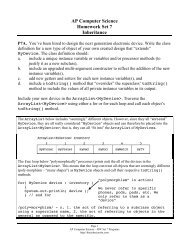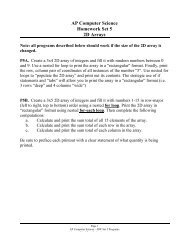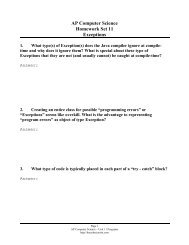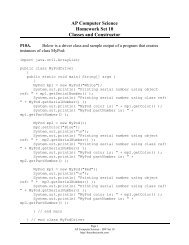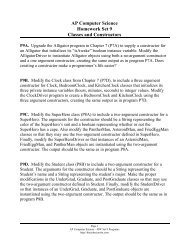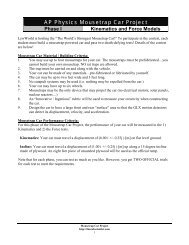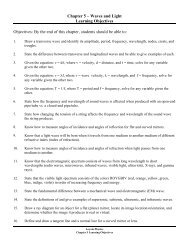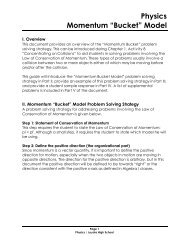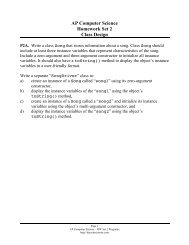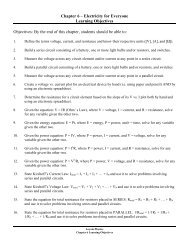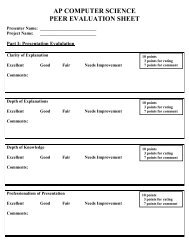Physics Energy “Bucket” Model - thecubscientist.com
Physics Energy “Bucket” Model - thecubscientist.com
Physics Energy “Bucket” Model - thecubscientist.com
Create successful ePaper yourself
Turn your PDF publications into a flip-book with our unique Google optimized e-Paper software.
Step 2: Write statement of COE<br />
Here you will state the Law of Conservation of <strong>Energy</strong>:<br />
EA = EB<br />
In addition to writing this statement, you will clearly label where “A” and “B” are<br />
in the diagram. This might be right before a ball is shot up into the air, the highest<br />
point a ball goes when shot up into the air, etc.<br />
Step 3: Draw Buckets (the <strong>Physics</strong> part)<br />
Problems involving the use of the Conservation of <strong>Energy</strong> always involve a<br />
“beginning point” and an “end point”. In the example of a pole vaulter who has<br />
kinetic energy just before he leaves the ground and possesses gravitational<br />
potential energy at the top of his vault (where he is momentarily at rest), the<br />
“beginning point” is the instant before he leaves the ground and the “end<br />
point” is the instant when he is at his maximum height and, for a instant, has no<br />
velocity or kinetic energy.<br />
The next step of the <strong>Energy</strong> Bucket model requires students to draw the following<br />
set of buckets and identify which forms of energy are present at the “beginning<br />
point” or “A” and “end point” or “B” as described above. The definition of each<br />
bucket is presented below.<br />
Note that the Wf (work done by friction) “drip pan” is used to “capture” energy<br />
that is spilled in “pouring” energy from the PEg bucket to the KB bucket (if air<br />
resistance or other frictional forces are present), to account for all “energy<br />
losses”.<br />
=<br />
KA<br />
PEgA<br />
PESA<br />
KB<br />
PEgB<br />
PESB<br />
Wf<br />
The “A” and “B” subscripts represent the “beginning point” and “end point”<br />
respectively.<br />
KA = the kinetic energy at point A [J]<br />
PEgA = the gravitational potential energy at point A [J]<br />
PESA = the spring potential energy at point A [J]<br />
KB = the kinetic energy at point B [J]<br />
PEgB = the gravitational potential energy at point B [J]<br />
PESB = the spring potential energy at point A [J]<br />
Wf = the work done by frictional forces [J]<br />
Page 2<br />
<strong>Physics</strong> | Loyola High School




